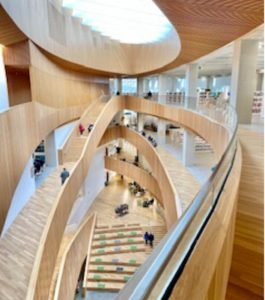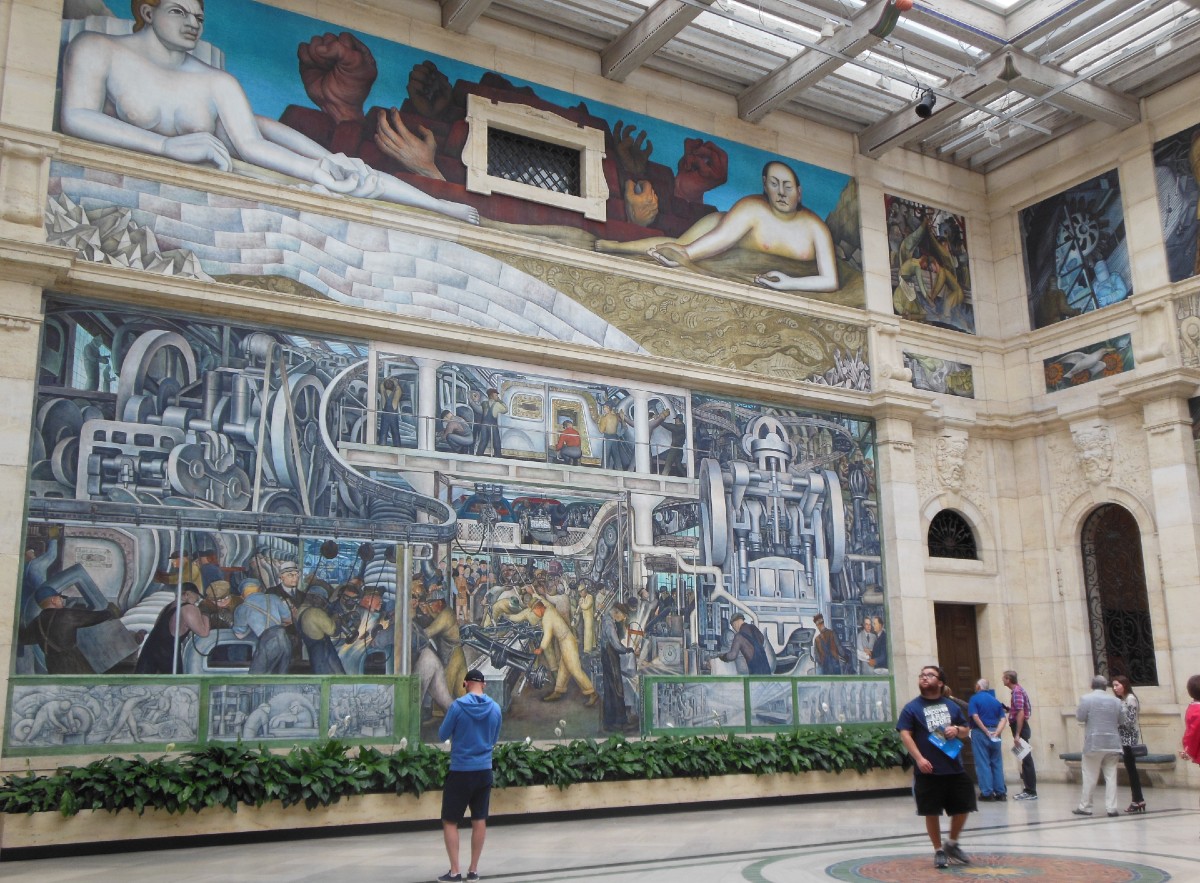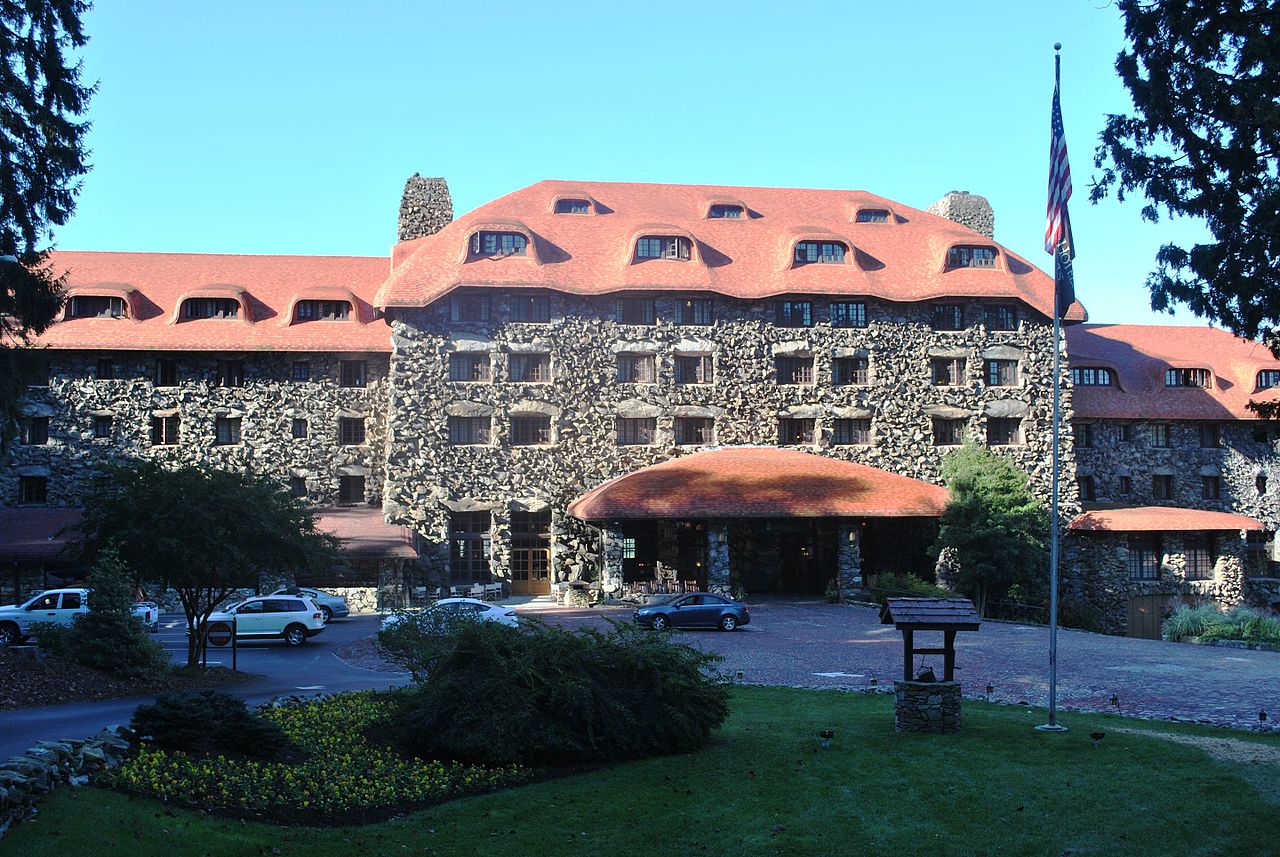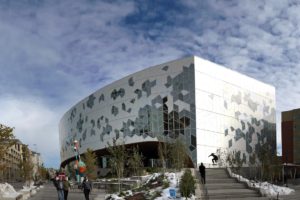GwinnettForum | Number 21.29 | April 13 , 2021
IMPRESSIVE MURAL: This is one of four walls at the Detroit Institute of Arts we found in GwinnettForum’s files recently. It is the work of Mexican muralist Diego Rivera (1886-1957) and was painted in nine months of labor-intensive work. There are 27 paintings on the four walls of what was once the Institute’s indoor Garden Court. Using the fresco technique common in ancient Egypt, Greece, Rome, and the Americas, Rivera created a grand and complex cycle of murals that portray the geological, technological, and human history of Detroit. He also developed an ancient context for modern industry rooted in the belief system of the Aztec people of central Mexico. Diego Rivera came to consider his Detroit Industry murals his finest work. It is a stunning and intricate work of art.
 TODAY’S FOCUS: Velocity program in fifth year of helping improve student performance
TODAY’S FOCUS: Velocity program in fifth year of helping improve student performance
EEB PERSPECTIVE: Novel set at Grove Park Inn introduces subject of enemy internment
ANOTHER VIEW: Georgia voting bill may end similar to North Carolina’s HB 2
SPOTLIGHT: The Piedmont Bank
FEEDBACK: Verbiage and stance of election law well stated by Houston
UPCOMING: Creative art activities coming to Duluth during month of May
NOTABLE: Gwinnett completes purchases of 38 acres at Gwinnett Place Mall
RECOMMENDED: The Swerve, by Stephen Greenblatt
GEORGIA TIDBIT: Historic Savannah preserves a dozen districts in the city
MYSTERY PHOTO: Bridges side by side are today’s Mystery Photo
CALENDAR: Recycling day coming on April 25 at Gwinnett County Fairgrounds
Velocity in 5th year of improving student performance
By Josiah Johnson
Boy with a Ball program
BUFORD, Ga. | Velocity, a cross-age mentoring program for at-risk students, is currently helping to improve student performance in two Gwinnett County Public Schools. Students at Berkmar face challenges that cannot be met by the school system alone. The make-up of Berkmar students is 65 percent Hispanic, 22 percent Black, 8 percent Asian, three percent White and 2 percent multiracial. Their majority Latino population demonstrates a national struggle to educate Latino youth. It began at Berkmar in 2017, with over 1,000 participants.
Velocity trains and guides at-risk high school students to be mentors to middle school students. Leveraging the power of developmental mentoring relationships, students cultivate connectedness, self-esteem, identity, and academic skills, enabling them to become successful students and influential leaders in their communities. We have also seen a rise in grades of students who are in two or more classes with our Velocity mentors, as the second-hand effects of the positive development of their leadership skills bleed into others who aren’t involved themselves. Finally, we have consistently seen a decrease in discipline referrals and increased attendance in our program participants.
One of our programs is called Boy With A Ball (BWAB). We partner with and use a curriculum developed by Dr. Michael Karcher to effectively engage students in the program. BWAB is currently implementing Velocity in Berkmar High School and Berkmar Middle School, as well as at Central Gwinnett High School and Moore Middle School. We have been asked by GCPS officials to consider expanding to the Collins High School cluster in 2022.
Developmental mentoring specifically in this program is a structured approach to cross-age, school-based peer mentoring in which high school students work after school one-on-one with middle school mentees. This is in contrast to cross-age peer tutoring, which has as its primary goal to help children develop specific academic skills.
Velocity works in four parts to engage relationally with students, in order to develop their sense of connectedness to themselves, their families, their school and their community:
1. Weekly After School Program: Mentors and their mentees participate together in a weekly program which uses a connectedness curriculum that includes socio-emotional, identity, life-skills, and college and career readiness components.
2. Family Engagement: BWAB staff visits the homes of program attendees to build supportive relationships with students’ families. This helps “bring the content home.” Lessons promoted at the weekly meeting are reinforced with parents, creating a system of accountability as staffers can see how family relations are developing.
3. Super Saturdays: held quarterly this is a day-long event in which parents of mentors and mentees engage in activities with their children. Parents are given an opportunity to witness firsthand their child’s mentor-mentee match and to connect with one another. This has led to the creation of parent groups, or single-mom groups.
4. Mentoring the mentors: BWAB staff and volunteers help mentors and mentees develop their leadership and soft skills, readying them both for life and the workplace. Our goal is to have one staff or volunteer member for every five students in the program. These relational touches help develop a young person’s sense of self-worth, as well as conversation skills.
Velocity believes that if a young person feels positive about their future and their current situation, they will do better in their academics. Velocity is proud that 100 percent of its members have graduated from high school, as well as having 95 percent go on to matriculate in college or university. It is funded by a robust group of individual donors, from foundations, churches and several corporations.
- Have a comment? Send to: elliott@brack.net
Novel set at Grove Park Inn introduces enemy internment
By Elliott Brack
Editor and Publisher, GwinnettForum
APRIL 13, 2021 | A new novel by an American Cherokee Indian set at the Grove Park Inn in Asheville gave me insights into a side note of World War II history. The book, Even As We Breathe, is by Annette Saunooke Clapsaddle, the first enrolled member of the Eastern Band of the Cherokee Indians to publish a novel. It was released in September. The author graduated from Yale University and The College of William and Mary. She is the executive director of the Cherokee Preservation Foundation, and an English teacher at Swain County (N.C.) High.
![]() The 229-page book is fast-paced, and is a good read, revolving around Asheville and Cherokee, N.C.
The 229-page book is fast-paced, and is a good read, revolving around Asheville and Cherokee, N.C.
Many Gwinnettians may have visited the Grove Park Inn. We once attended a Gwinnett Chamber of Commerce retreat there, and our family have been guests on other occasions. But we didn’t know that it had been an internment camp during World War II.
The Asheville Citizen reported that in the spring of 1942, the U.S. Government leased the Grove Park Inn as an internment camp for enemy diplomats. The government also leased The Greenbrier in West Virginia, the Homestead in Virginia, The Assembly Inn at Montreat, N.C. and other resorts, for camps. Regular commercial guests were not permitted to stay at the resorts when used as camps. The internment camps were reported in a front page story in The New York Times.
American diplomats being caught in countries for which we were at war (Germany, Italy and Japan) were also held in similar internment in those countries. The idea was to house people from our enemy countries in nice facilities, with anticipation that Americans held in the enemy countries would also be treated well.
Those staying at the Grove Park Inn were treated as regular guests, enjoying the facilities, such as golf, badminton, lawn bowling, shuffleboard and card games.
Robert A. Fearey, who was the private secretary to U.S. Ambassador to Japan Joseph C. Grew, wrote fondly of his time interned in Japan. He wrote about scheduling dignitaries’ golf games and drinking up the ambassador’s wine collection, so as to not leave it for the Japanese. (To read more of Fearey’s story of internment life in Japan, go here.)
- To read an account of Americans trapped in Germany, click here.
Germans and Italians, including German newspaper correspondents living in this country at the start of the war, were sent to the Greenbrier, along with Italians, while the Japanese on the East Coast were at the Homestead. But the story goes, the Germans and Italians did not get along, so Italians were moved to the Grove Park Inn.
It was thought the internment would be only perhaps two months, but it lasted for seven months. Some even stayed longer. Later on, an elaborate prisoner exchange took place, with ships from two nations meeting in such places as South American and Madagascar, for prisoner swap, sending the diplomats to their respective home nations. After the diplomats departed, the government housed military officers needing convalescent care.
Back to the origins of the Grove Park Inn: it was built in 1913 by a person from St. Louis, Mo., Edwin W. Grove, a pharmacist, who enjoyed spending the summers there. The Inn was built in a year, using native granite.
Now another new (to me) story: Wikipedia says that in World War I, German nationals were automatically classified as “enemy aliens.” Two of the four main World War I-era internment camps were located in Hot Springs, N.C., and Fort Oglethorpe, Georgia.
- Have a comment? Send to: elliott@brack.net
Georgia voting bill may end similar to North Carolina’s HB 2
By George Wilson, contributing columnist
STONE MOUNTAIN, Ga. | The growing backlash in Georgia isn’t that surprising for North Carolina, which lost an estimated $3.8 billion in business after a 2016 law limiting legal protections for the LGBTQ community under its House Bill 2. (The law’s best-known provision requires visitors to schools and other government facilities to use the bathroom of the gender that appears on their birth certificates.)
![]() Why it matters: “North Carolina is a perfect case study,” said Michael Bitzer, a political scientist at Catawba College, Salisbury, N.C. He notes that when the bill became law:
Why it matters: “North Carolina is a perfect case study,” said Michael Bitzer, a political scientist at Catawba College, Salisbury, N.C. He notes that when the bill became law:
- North Carolina lost a National Basketball Association All-Star game;
- Entertainers boycotted performances; and
- North Carolina has spent years overcoming the reputational damage that HB2 caused them before its repeal. It is estimated that this new Georgia law, SB202 will have a $100 million negative impact on Georgia.
In the days since Georgia Governor Brian Kemp signed bill SB202 and now nicknamed the Jim Crow 2.0 election law, activists, business leaders, and consumers have called on boycotts of Georgia corporations until they take a stand against the measure.
Business Roundtable, a coalition of top corporate CEOs chaired by Wal-Mart President Doug McMillon, says: “….unnecessary restrictions on the right to vote strike at the heart of representative government,” and called for bipartisan efforts to ensure voter protection in state legislatures.”
Rather than just speaking out, a more effective approach would be for corporations and wealthy individuals to quit giving money to Georgia (and national) Republicans until this law is repealed.
Moreover, a national reckoning with racial injustice is still very much underway. The pressure is even greater for corporations to speak out today if laws don’t align with their values. Nationally, over 200 companies have already done so. These include Dell, Salesforce, Dow, HP, American Airlines, Microsoft and Twitter. Others issuing similar statements include Georgia-based Coca-Cola and Delta.
Republicans are now trying to pin the decisions of Major League Baseball (MLB) on Stacey Abrams, a voting-rights advocate, rather than on the Georgia Republican legislature’s open attempt to undermine democracy. Also, Abrams has come out against any kind of boycott.
John Boehner, the former Republican majority leader has a new book out. Entitled On the House: a Washington Memoir, he states that the Republican focus on media, rather than policy, has mushroomed until lawmakers are now reduced to talking about Dr. Seuss and the Potato Head clan rather than answering the needs of voters, with no policy besides “owning the libs.” This also seems to be about what our state legislators did during the last session.
- Have a comment? Send to: elliott@brack.net
The Piedmont Bank
 The public spiritedness of our underwriters allows us to bring GwinnettForum.com to you at no cost to readers. Today’s underwriter is The Piedmont Bank, which opened its doors in 2009, is a full service commercial bank. It has recently closed a merger with Westside Bank with offices in Paulding and Cobb Counties and also recently opened an office in downtown Duluth. Piedmont now has offices in 13 locations, with its home office in Peachtree Corners at 5100 Peachtree Parkway and other locations; at 185 Gwinnett Drive in Lawrenceville; east of Interstate 85 near Suwanee at Old Peachtree and Brown Roads; in Dunwoody at 1725 Mount Vernon Road, in Cumming at 2450 Atlanta Highway and in Cleveland, Gainesville, Jefferson and Blue Ridge. Piedmont Bank has capitalization in excess of $140 million and over $1.6 billion in total assets and is active in making loans to businesses and individuals in its local markets. Piedmont’s board of directors includes local business leaders with strong ties in the communities it serves. Board members include Lamar Black, Ray Black, Robert Cheeley, Paul Donaldson, Kelly Johnson, John Howard, Paul Maggard, Michael Tennant, Ray Barnes and Monty Watson. Deposits at The Piedmont Bank are insured by the FDIC up to $250,000.
The public spiritedness of our underwriters allows us to bring GwinnettForum.com to you at no cost to readers. Today’s underwriter is The Piedmont Bank, which opened its doors in 2009, is a full service commercial bank. It has recently closed a merger with Westside Bank with offices in Paulding and Cobb Counties and also recently opened an office in downtown Duluth. Piedmont now has offices in 13 locations, with its home office in Peachtree Corners at 5100 Peachtree Parkway and other locations; at 185 Gwinnett Drive in Lawrenceville; east of Interstate 85 near Suwanee at Old Peachtree and Brown Roads; in Dunwoody at 1725 Mount Vernon Road, in Cumming at 2450 Atlanta Highway and in Cleveland, Gainesville, Jefferson and Blue Ridge. Piedmont Bank has capitalization in excess of $140 million and over $1.6 billion in total assets and is active in making loans to businesses and individuals in its local markets. Piedmont’s board of directors includes local business leaders with strong ties in the communities it serves. Board members include Lamar Black, Ray Black, Robert Cheeley, Paul Donaldson, Kelly Johnson, John Howard, Paul Maggard, Michael Tennant, Ray Barnes and Monty Watson. Deposits at The Piedmont Bank are insured by the FDIC up to $250,000.
- For a list of other sponsors of this forum, click here.
Verbiage and stance of election law well-stated by Houston
Editor, the Forum:
![]() Debra Houston says it so well, and reflects my sentiments, regarding all the verbiage and stances surrounding Georgia’s new election law. In order to maintain election integrity, we must have a positive ID for voters. And all the corporate types, I suspect, would be best served tending to business, and foregoing political opinions. There are few if any positive outcomes for them in taking these positions.
Debra Houston says it so well, and reflects my sentiments, regarding all the verbiage and stances surrounding Georgia’s new election law. In order to maintain election integrity, we must have a positive ID for voters. And all the corporate types, I suspect, would be best served tending to business, and foregoing political opinions. There are few if any positive outcomes for them in taking these positions.
— Randy Brunson, Duluth
New voting law allows hijacking of Boards of Elections
Editor, the Forum:
I am writing in response to Debra Houston’s commentary on the Georgia voting law in the GwinnettForum.
First, the 2020 presidential election was one of the most secure, most fair elections in recent history. That has been proven. Election fraud by the general population is a myth.
Secondly, the Georgia General Assembly created the law in response to the “BIG LIE,” and therefore the law will never have credence. As Gwinnett’s Alice O’Lenick stated: “Election law changes should be made so Republicans would ‘at least have a shot at winning.’”
Thirdly, and most importantly, the law allows the Legislature to hijack local Board of Elections when they don’t like the vote outcome (which means they will follow rumors and innuendo just like the big lie), and could actually change election outcomes. Also, they changed the elected Secretary of State from running elections to having a partisan appointee in that job and that is another authoritarian move.
Finally, Citizens United decision provided that money is speech. Republicans want corporate donations, but when a business speaks out in defense of democracy, well that’s not okay.
This law was not passed in good faith towards making democracy stronger. It’s an authoritarian act designed to help one group win, because frankly they don’t really like democracy if they’re not in power.
— Elizabeth Day, Lawrenceville
Here’s another thought about packing the Supreme Court
Editor, the Forum:
When FDR considered packing the Supreme Court, it was because of what the Court had ruled. He was warned that he would risk impeachment by his own party. Today, packing the Court is being considered because a party wants the Court to make certain rulings that support their political goals.
If Justice Stephen Breyer retires, President Biden has his choice to face confirmation. Likewise, if Justice Clarence Thomas retires, the same would transpire. But if we plan to persistently alter the Court, it will become a farce of ever expanding size.
— Byron Gilbert, Duluth
Dear Byron: Thoroughly agree with most of what you say. Nine members seem reasonable. However, though allegations have been thrown out about Democrats possibly enlarging the courts, this has not come as a pronouncement of the Biden Administration.–eeb
Send us your thoughts: We encourage you to send us your letters and thoughts on issues raised in GwinnettForum. Please limit comments to 300 words, and include your hometown. We reserve the right to edit for clarity and length. Send feedback and letters to: elliott@brack.net
Creative art activities coming to Duluth during May
The City of Duluth is hosting creative art for the month of May, designed to spark your creative side. Included are a community art project, live performances, unique scavenger hunt, art festivals, and other events. On the program are:
 Community Art Project: Join us in the creation of a contactless community grid mural! The mural will be divided into 192 grid increments (6” x 6” each). The grid panels will be painted by community members, who will be able to do a contactless pick-up on April 19 during the hours of 11 a.m. to 6 p.m. and drop-off finished panels between April 19 and May 3. Registration to reserve free art kits is now open.
Community Art Project: Join us in the creation of a contactless community grid mural! The mural will be divided into 192 grid increments (6” x 6” each). The grid panels will be painted by community members, who will be able to do a contactless pick-up on April 19 during the hours of 11 a.m. to 6 p.m. and drop-off finished panels between April 19 and May 3. Registration to reserve free art kits is now open.
- Fridays-N-Duluth featuring the Lantern Parade and DFAL Art Walk on May 7. Pick up a free lantern with SKA Academy from 6-8 p.m. and then show off your lantern by walking in the lantern parade around 8:30 p.m. Stop by Parsons Alley for the DFAL Art Walk. There will be artists and live demonstrations from 6-8 p.m.
- Duluth High School Wildcat Theatre presents When She Dared: Join us at 8 p.m. on Town Green for When She Dared, a musical written by Duluth High School Senior Hannah Fleming. This show will take you alongside Charlotte in an extraordinary journey of self-realization.
- Seek Duluth on May 11: Test your riddle-solving skills during this walkable scavenger hunt around Duluth!
- Duluth Spring Arts Festival on May 22-23: This event will have up to 60 painters, photographers, sculptors, leather and metalwork, glass blowers, jewelers and crafters! This free festival will offer artist demonstrations, live acoustic music, a children’s play area, plus festival foods and beverages.
- Eats and Beats on May 27: Bring a picnic or choose from one of our local restaurants and enjoy live music, interactive art and more in Parsons Alley from 6-9 p.m.
- For more information on upcoming events, visit www.duluthga.net/events.
Gwinnett completes 38-acre purchase at Gwinnett Place Mall
Gwinnett County has completed the purchase of 38 acres at Gwinnett Place Mall by its Urban Redevelopment Agency (URA). The plot was purchased for $23 from Moonbeam Capital Investment Group of companies. The property has been a key focus for leadership within the County and will amplify future expansion and planning efforts.
 Nicole Love Hendrickson, chair of the Gwinnett County Board of Commissioners, says: “We are thrilled to add the Gwinnett Place Mall property to the County’s portfolio. The location offers us an incredible opportunity to create a redevelopment that will serve every Gwinnett resident. With community involvement and detailed planning, this site will be a catalyst for future growth in our area.”
Nicole Love Hendrickson, chair of the Gwinnett County Board of Commissioners, says: “We are thrilled to add the Gwinnett Place Mall property to the County’s portfolio. The location offers us an incredible opportunity to create a redevelopment that will serve every Gwinnett resident. With community involvement and detailed planning, this site will be a catalyst for future growth in our area.”
Completed in 1984, the Gwinnett Place Mall site has more than 90 acres and fell on hard times in the mid-2000s as key tenants moved to regional malls. Properties not included in this sale will remain with respective current owners, whose current tenants – Macy’s, Mega Mart and Beauty Master – will not be impacted by this purchase. The URA is working closely with these groups to ensure all are aligned on goals as planning and revitalization begin.
Jackson EMC Foundation awards nearly $100,000 locally
 The Jackson EMC Foundation board of directors awarded a total $99,705 in grants during its March meeting, including $57,500 to organizations serving Gwinnett County.
The Jackson EMC Foundation board of directors awarded a total $99,705 in grants during its March meeting, including $57,500 to organizations serving Gwinnett County.
$15,000 to Gwinnett County Public Library, to purchase its Kitchen a’ la Cart, an interactive, mobile culinary cart outfitted with supplies and video equipment to stream programming, which teaches nutrition, math, science, languages and history.
$15,000 to L.A.M.P. Ministries, Inc., in Gainesville, for its Community Youth and Children’s program, which combines group and individual counseling, community activities and mentoring to provide high risk youth in Gwinnett, Hall, Jackson and Lumpkin counties.
$12,500 to Philadelphia College of Osteopathic Medicine (PCOM), to provide anatomy equipment and supplies for its science and math summer academy for rising 10th and 11th grade students in Gwinnett County Public Schools.
$10,000 to Judy House Ministry, a faith-based transition home for homeless men who have been incarcerated or under community supervision in Barrow, Gwinnett, and Hall counties, to provide housing assistance.
$5,000 to Tiny Stitches, in Suwanee, to provide materials and supplies for their network of volunteers to handcraft a 28- to 32-piece layette of clothing and blankets to keep an infant warm and dry for the first three months of life, donated to mothers in Franklin, Gwinnett, Hall and Jackson counties who have little or nothing for their newborns.
The Swerve, by Stephen Greenblatt
![]() From Raleigh Perry, Buford: The author is a professor of Humanities at Harvard, specializing in Late Medieval and Renaissance studies. Men like the subject of this book were called “Humanists.” In the Dark Ages, many of the ancient books were destroyed. Any that were around were in remote monasteries. In 1417, Poggio Bracciolini, having been released from his job at the Vatican where he wrote Papal Bulls, followed the footsteps of Petrarch and others searching for ancient manuscripts. This story revolves after he found a copy On the Nature of Things by Lucretius. There were no Xerox machines then; all manuscripts had to be copied by hand. The “swerve” refers to a key concept in the ancient theories, according to which atoms moving through the void are subject to a bias when falling straight through the void, they are sometimes subject to a slight unpredictable “swerve.” That’s what makes this book fascinating and a surprise.
From Raleigh Perry, Buford: The author is a professor of Humanities at Harvard, specializing in Late Medieval and Renaissance studies. Men like the subject of this book were called “Humanists.” In the Dark Ages, many of the ancient books were destroyed. Any that were around were in remote monasteries. In 1417, Poggio Bracciolini, having been released from his job at the Vatican where he wrote Papal Bulls, followed the footsteps of Petrarch and others searching for ancient manuscripts. This story revolves after he found a copy On the Nature of Things by Lucretius. There were no Xerox machines then; all manuscripts had to be copied by hand. The “swerve” refers to a key concept in the ancient theories, according to which atoms moving through the void are subject to a bias when falling straight through the void, they are sometimes subject to a slight unpredictable “swerve.” That’s what makes this book fascinating and a surprise.
An invitation: what books, restaurants, movies or web sites have you enjoyed recently? Send us your recent selection, along with a short paragraph (150 words) as to why you liked this, plus what you plan to visit or read next. Send to: elliott@brack.net
Historic Savannah preserves a dozen districts in the city
Historic Savannah Foundation is a local, private, nonprofit, preservation organization chartered in 1955 to preserve buildings, squares, and neighborhoods in the city of Savannah, Georgia’s colonial capital. The organization is managed by a professional staff under the direction of a board of trustees. It is financed by dues from a broad membership base, private donations, grants, and income from such projects as special events and publications. The foundation is credited with directly saving more than 350 buildings in Savannah’s historic neighborhoods in its first half-century. It also sponsors a yearly awards program for noteworthy local preservation projects.
 Savannah has nearly a dozen historic districts. The National Historic Landmark District, which consists of the original planned city founded by James Oglethorpe in 1733, features a unique design of streets and 22 squares framed by 18th, 19th and 20th century buildings. In the 1930s and 1940s many distinguished buildings in this district were demolished to create parking lots, and squares were bisected by streets and fire lanes in order to speed traffic flow.
Savannah has nearly a dozen historic districts. The National Historic Landmark District, which consists of the original planned city founded by James Oglethorpe in 1733, features a unique design of streets and 22 squares framed by 18th, 19th and 20th century buildings. In the 1930s and 1940s many distinguished buildings in this district were demolished to create parking lots, and squares were bisected by streets and fire lanes in order to speed traffic flow.
The demolition of the 1870 Italianate City Market and attempted demolition of the 1821 Federal-style Davenport House galvanized seven concerned women to organize the Historic Savannah Foundation in 1955. No local zoning laws existed to protect historic structures, thus the foundation developed a comprehensive strategy to promote preservation through private-sector involvement. The Davenport House, the organization’s first headquarters, now holds a house museum and gift shop.
A comprehensive architectural inventory of buildings within the Landmark District was completed in 1962. More than 1,100 structures were mapped and professionally evaluated for their architectural significance. Using the inventory as a guide, selected buildings were purchased in areas where the concentration was large enough to provide a significant impact. The foundation does not restore buildings but transfers buildings to owners who are willing to restore according to the covenants attached to the deed.
A bank consortium was formed to make loans to the foundation for property purchases. This revolving fund was replenished by fund-raising efforts, membership dues, and reinvestment of proceeds from property sales. The foundation stretched its limited funds by selective purchasing and the use of options. In the mid-1960s, using only $38,000 of seed money from its revolving fund for option purchase, the foundation created $1 million in reinvestment in the thirteen-acre Pulaski Square–West Jones Street project area. The project received national attention. The revolving fund continues to be the foundation’s primary preservation program.
(To be continued)
- To view the Georgia Encyclopedia article online, go to http://georgiaencyclopedia.org
Bridges side by side are today’s Mystery Photo
Here’s another Mystery Photo that may prove difficult, in that about the only clues are from two nearby bridges. So try and figure out where these bridges sit, virtually side by side. And consider sending in a Mystery Photo of your own, with several clues and and preferably from somewhere in Georgia. Send your answer or photos to elliott@brack.net to include your hometown.
 While we thought the last Mystery Photo was tough, four regulars made the identification with flying colors of the Calgary (Canada) Central library. The photograph was sent to us by Mark Barlow of Peachtree Corners.
While we thought the last Mystery Photo was tough, four regulars made the identification with flying colors of the Calgary (Canada) Central library. The photograph was sent to us by Mark Barlow of Peachtree Corners.
Those recognizing it include George Graf of Palmyra, Va.; Allan Peel of San Antonio, Tex.; Susan McBrayer of Sugar Hill; and Bob Foreman of Grayson.
Peel wrote: “The photo is an interior shot of the new Central Public Library in Calgary, Alberta, Canada. The four-story, 240,000 square foot building was designed by American-Norwegian architecture firm Snøhetta in consultation with the Canadian firm DIALOG. Their design features an oval-like shape and an interior with a large central atrium with large picture windows and skylights, offering a bright, open, and airy feel to the place. The building is elevated one floor above street level to accommodate a light rail trackway below, as well as a public plaza. Since its opening day on November 1, 2018, the Calgary Public Library System. has become one of the most actively used library systems in North America. It has 21 branches throughout the city,
“More facts:
- The buildings’ shape is inspired by the shape of a Chinook Cloud Arch – to remind the visitor of the pattern created by stratus clouds rising up and over the Canadian Rockies, less than an hour west of Calgary.
- It is the most massive formed timber shell in the world, with all of the interior walls and furniture being made from Red Cedar planks from nearby British Columbia.
- But in addition to all of this wood, the library is also built with over 18,500 tons of steel – enough steel to manufacture over 1,000 medium-sized cars! Despite all of this wood and steel, you can still see the interior of the library from all exterior sides and angles.”
Gwinnett holding recycling day April 24 at Fairgrounds
Recycle your electronics, paint, tires, and paper at the Gwinnett Solid Waste Management and Gwinnett Clean and Beautiful’s annual Earth Day event Saturday, April 24. The event runs from 9 a.m. until noon at the Gwinnett County Fairgrounds, 2405 Sugarloaf Parkway in Lawrenceville. For more, visit GwinnettCB.org/Events or call the Solid Waste Call Center at 770-822-7141. Paper shredding is limited to five copier paper boxes; paint is limited to 10 gallons; and there is a limit on eight tires. Recycling is free except for projection or console TVs ($35), monitors ($15), and printers ($5), all which must be paid with cash.
- Have a comment? Send to: elliott@brack.net
GwinnettForum is provided to you at no charge every Tuesday and Friday.
Meet our team
- Editor and publisher: Elliott Brack, 770-840-1003
- Managing editor: Betsy Brack
- Roving photographer: Frank Sharp
- Contributing columnist: Jack Bernard
- Contributing columnist: Debra Houston
- Contributing columnist: George Wilson
More
- Location: We are located in Suite 225, 40 Technology Park, Peachtree Corners, Ga. 30092.
- Work with us: If you would like to serve as an underwriter, click here to learn more.
Subscriptions to GwinnettForum are free.
- Click to subscribe.
- Unsubscribe. We hope you’ll keep receiving the great news and information from GwinnettForum, but if you need to unsubscribe, go to this page and unsubscribe in the appropriate box.
© 2021, Gwinnett Forum.com. Gwinnett Forum is an online community commentary for exploring pragmatic and sensible social, political and economic approaches to improve life in Gwinnett County, Ga. USA.
















Follow Us